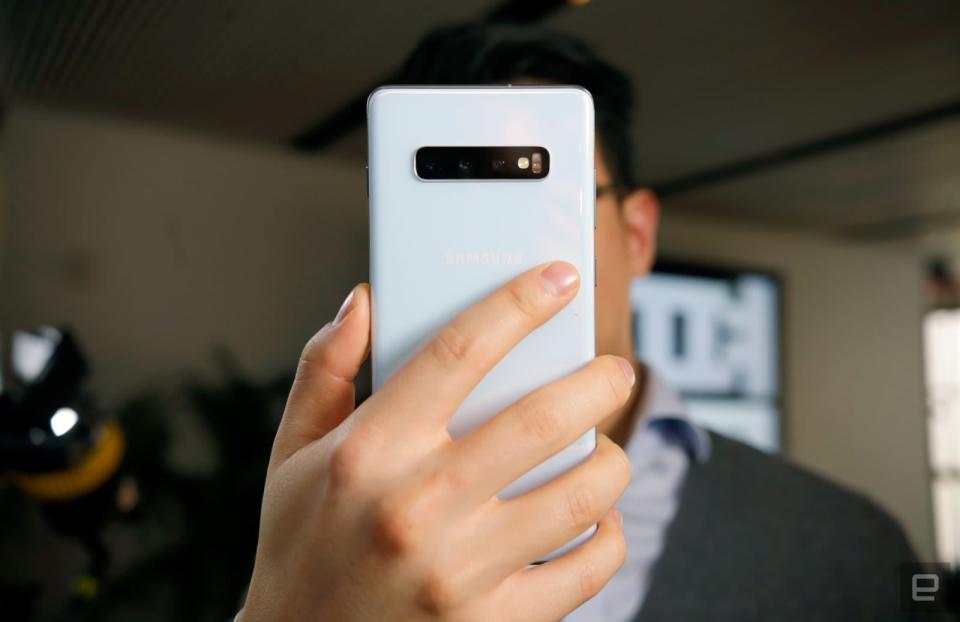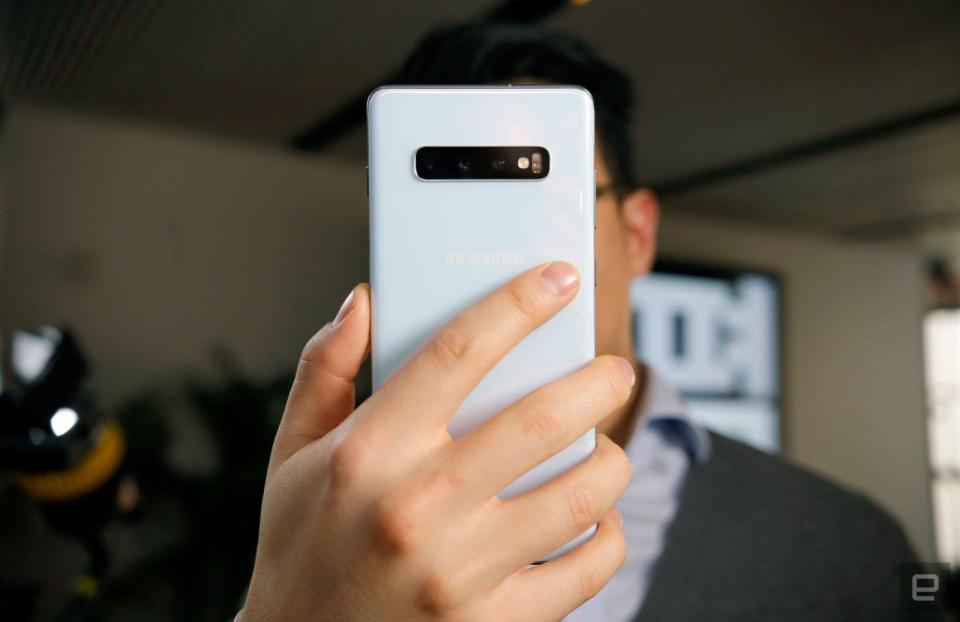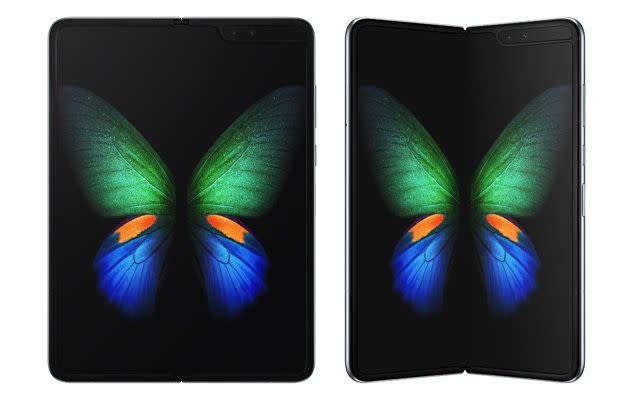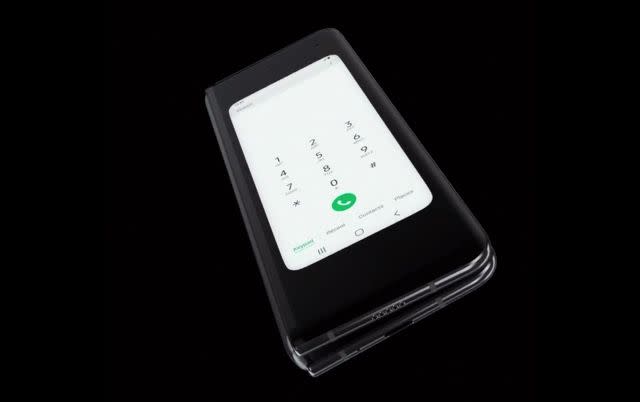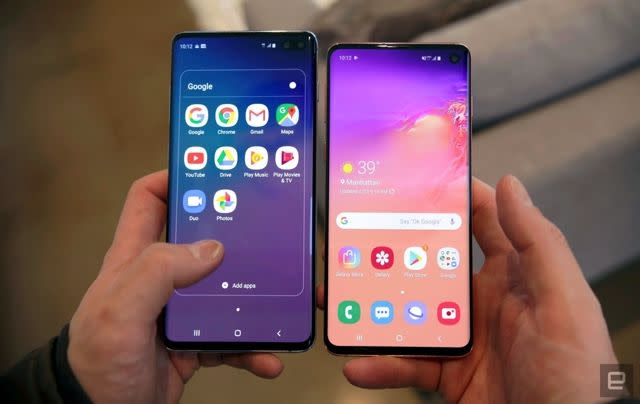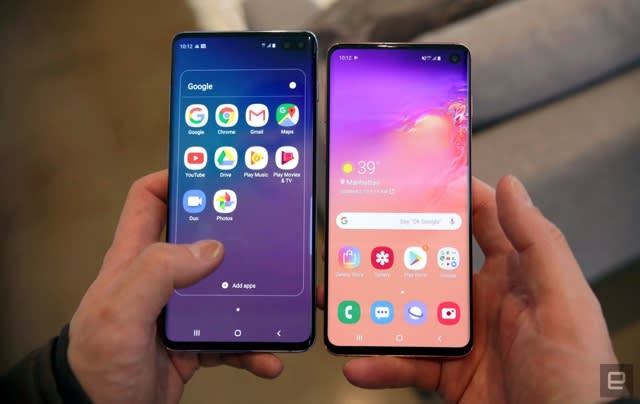The Morning After: The problem with the Galaxy Fold
The future is difficult.
Welcome to your weekend! Did you hear? Foldable phones are a real thing. Beside Samsung's big Unpacked showcase, we re-reviewed PlayStation's streaming service, we need to (and do) talk about Huawei's rough year and dream of solar farms in space. MWC kicks off this weekend, so expect even more foldable phone announcements, and more from the world's biggest mobile show.
Samsung's foldable phone is officially the Galaxy Fold
The future of mobile could be foldable. Perhaps. If you've got $2,000 at the ready. Samsung finally unveiled its flexible marvel, a dual-screened phone-tablet hybrid (just don't call it a phablet) that looks gorgeous when opened. And less so when it's not. To Samsung's credit, it looks like it's managed to achieve its promise of a foldable Galaxy phone, which will launch at the end of April. Unfortunately, however, it wasn't ready for handling at Galaxy Unpacked, and attendees had to make do with the new Galaxy S10 family. But it's not all good news.
The problem with the Galaxy Fold
Technically impressive? Yes? Desirable? Perhaps. No complaints? Wait a second.
Samsung Galaxy S10 and S10+ hands-on: New screen, new cameras
The Galaxy S10 and S10+ are two of four phones Samsung has unveiled, alongside a smaller S10e and a souped-up Galaxy S10 5G. We played with them and they're well-rounded, attractive flagships that, once again, iterate on a proven formula. Samsung's 2019 Galaxy series is an unsurprising mix of high-quality processors and cameras with a sumptuous screen. We've come to expect excellence from the Galaxy S series: Great design, performance, cameras and displays are pretty much table stakes now. On those criteria, the new flagships seem to deliver. But groundbreaking? Maybe not. Both the Galaxy S10 and S10+ arrive on March 8th starting at $900.
China wants to put a solar farm in space by 2025
According to China's state-backed Science and Technology Daily, Chinese scientists plan to build and launch small power stations into the stratosphere between 2021 and 2025, upgrading to a megawatt-level station in 2030 and a gigawatt-level facility high above Earth before 2050. Without atmospheric interference or night-time loss of sunlight, these space-based solar farms could provide an inexhaustible source of clean energy.
Netflix officially cancels 'Jessica Jones' and 'The Punisher'
Netflix has cancelled Jessica Jones and The Punisher, putting an end to the Marvel partnership that started in 2013. Jessica Jones' third season will still launch on Netflix later in 2019 as a last hurrah, but that's as far as it goes.
Google put a microphone in Nest Secure and forgot to tell anyone
Google's decision to bring Assistant-enabled voice controls to its Nest Secure system is causing a stir almost a year after the integration was rolled out. The problem is no one actually knew the security device, launched in September 2017, packed a microphone in the first place. Google built a mic into its Nest Guard -- a small hub with a keypad on top that communicates with the other sensors in its Secure system -- but failed to mention it in its product materials, reports Business Insider. Asked about the microphone's existence, Google said it was "never intended to be a secret." Eep.
But wait, there's more...
The Morning After is a new daily newsletter from Engadget designed to help you fight off FOMO. Who knows what you'll miss if you don't Subscribe.
Craving even more? Like us on Facebook or Follow us on Twitter.
Have a suggestion on how we can improve The Morning After? Send us a note.

